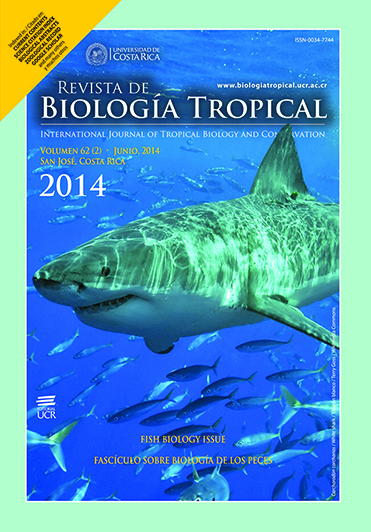Abstract
In Campeche state, a total of 122 Wildlife Conservation and Management Units have been recently conformed. In these units, eventhough the white tailed deer Odocoileus virginianus thomasi is a game species, no studies on the diet of this species have been undertaken. The objectives of this work were to estimate the botanical composition of the diet and its seasonal change, to determine forage availability, carrying capacity and stocking rate of O. virginianus thomasi. The study was conducted in the experimental unit of Colegio de Postgraduados in Campeche, Mexico, from October 2010 to May 2012. The diet was determined through microhistological analyses of the white tailed deer feces by the use of reference material. Forage availability was determined through the Adelaide´s method; the stocking rate, using the grazing pressure factor; and carrying capacity considering forage availability and 35% of utilization efficiency. In this experimental unit, the deer diet included 40 species belonging to15 families. The highest species richness ocurred during the rainy season with 29 species. However, deers preferred shrubs during all seasons of the year, and herbaceous species during the rainy season. The diet composition, forage availability, carrying capacity and stocking rate varied throughout the year. Carrying capacity ranged from 0.04 to 1.08deer/ha. Additional studies are required to detail about the composition of the diet, habitat availability and use throughout its geographical range, and to detail on nutritional and health aspects.
##plugins.facebook.comentarios##

This work is licensed under a Creative Commons Attribution 4.0 International License.
Copyright (c) 2014 Revista de Biología Tropical






